Viburnum opulus Roseum is that Old Fashioned Snowball Bush that was grown in the gardens of our grandparents. It is one of the oldest known garden viburnums, and has been around for a very long time. Learn how to grow Snowball bush, Viburnum Opulus Roseum, and enjoy this heirloom plant in your own garden.
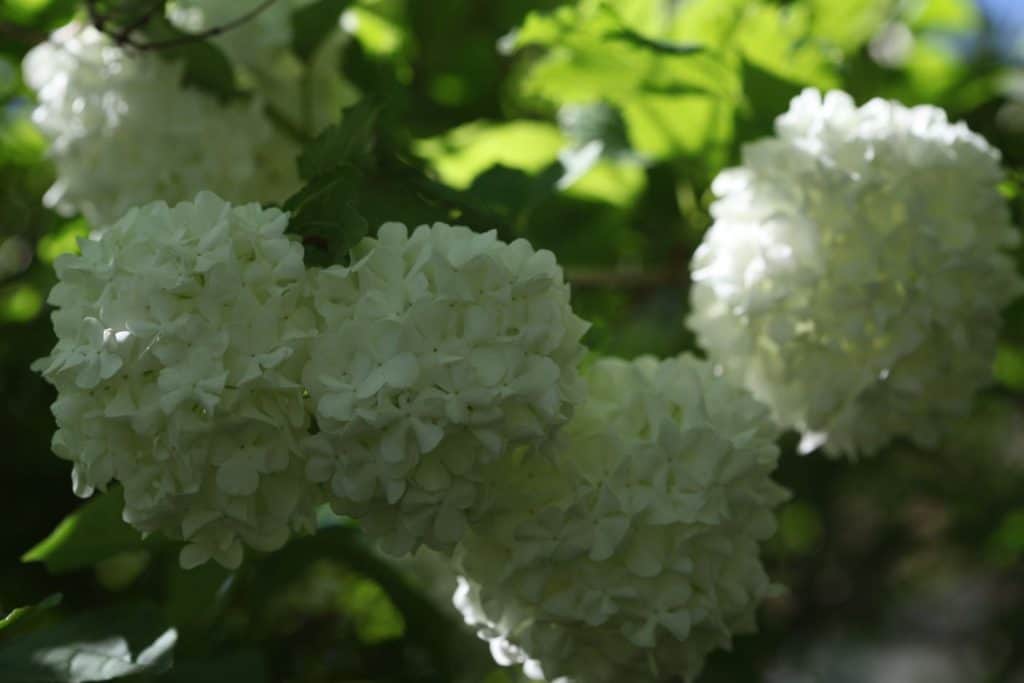
I remember this Snowball bush as a child. There was one growing alongside the house of our elderly neighbour.
The branches and blooms were mesmerizing. I recall looking out into the branches at the white snowball shaped flowers, which filled the large shrub and bobbled softly from it's branches.
We had just moved to Nova Scotia from a location in the far north of Canada. We had lived up next to the treeline, where practically nothing grew, except for stunted evergreens.
This new place was filled with deciduous trees and shrubs, and many had wonderful flowers, just like this bush.
My memories of my neighbour are connected to her garden, and in particular her impressive Snowball bush.
I'm pretty sure I'm not the only one with past memories of these beauties. They are connected to our grandparents, our neighbourhoods, and old fashioned gardens next to century homes.
We have a Snowball bush at the farm, just next to the farmhouse. It was planted at least two generations ago, and quite possibly before that.
This Snowball Bush is cherished. It is well cared for, and appreciated. Hopefully it will be around for many more years to come.
What is Viburnum Opulus Roseum?
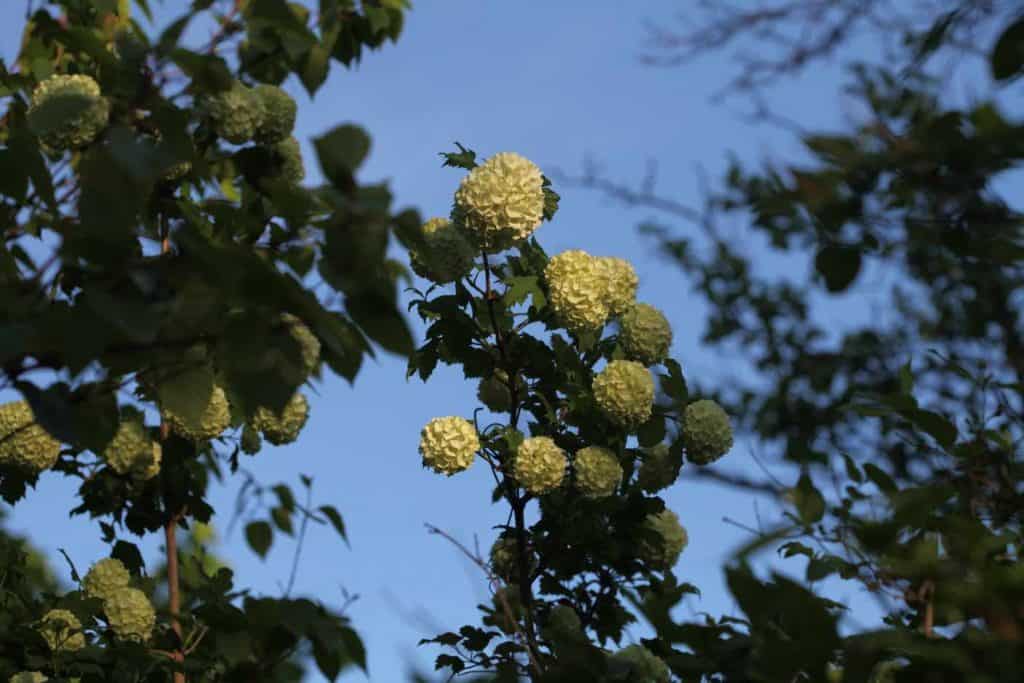
Viburnum is a genus of deciduous shrubs which contain over one hundred and fifty species.
Viburnum opulus is a species of viburnum, and Viburnum opulus 'Roseum' is a cultivar of Viburnum opulus.
Roseum is a sterile cultivar, and will not produce any berries in the fall. This plant was originally known as Viburnum opulus 'Sterilis'.
'Snowball bush' is one of the common names for Viburnum opulus roseum.
There are also a number of other viburnum species which are referred to as snowball bushes, and some hydrangeas as well. They are not only called by the same name, they also can look very similar as well.
Viburnum Opulus Roseum is most likely one of the oldest and most common types of snowball bushes grown.
Other Common names for Viburnum Opulus Roseum
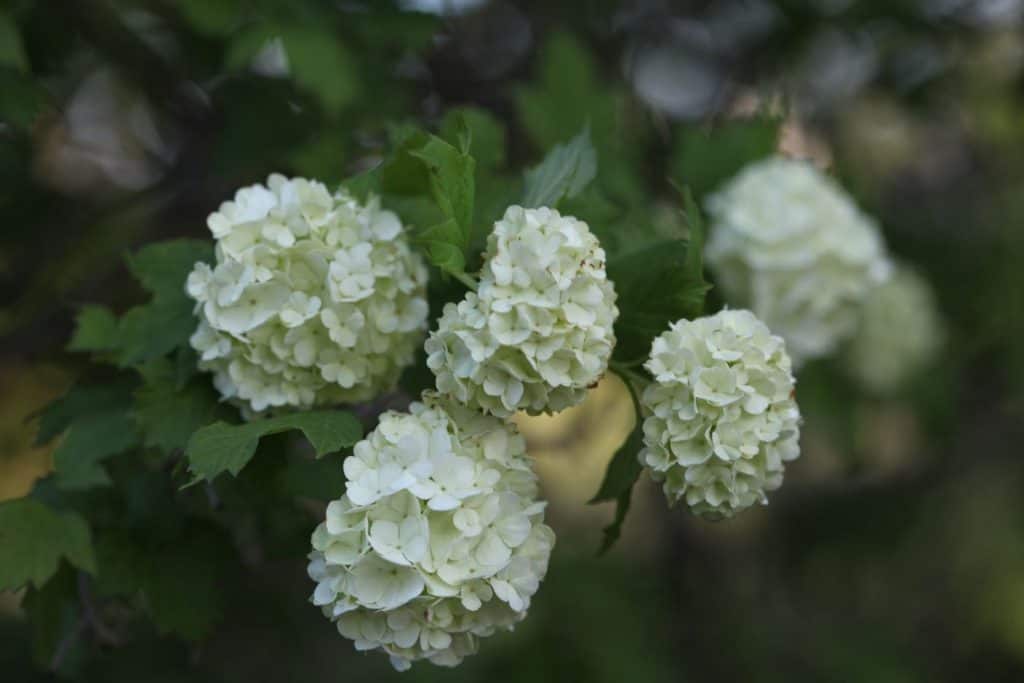
It has been referred to as the Common snowball bush, Old Fashioned Snowball bush, European snowball bush and Eastern snowball bush.
Another common name is the guelder rose, arising from the origins of this viburnum in Guelderland, Netherlands.
It is a beauty known by many names, and it can all be a bit confusing.
Characteristics Of Viburnum Opulus Roseum
Opulus roseum is a deciduous flowering shrub.
This shrub can be very showy and beautiful. It can be grown as a specimen plant so that it can stand out in the garden all on it's own.
Or it can be grown in the landscape amongst other shrubs, trees and flowers.
It can also be used as hedging due to its thick branching nature.
The flowers are beautiful and can be cut and brought into the house.
This snowball bush is very hardy and quite resistant to disease. It can be susceptible to aphids, although I have never seen aphids on our plant.
Viburnum Opulus Roseum can grow to be quite tall, and can reach a height and width of up to twelve feet. Our snowball viburnum has reached this height, although it has been growing for many decades.
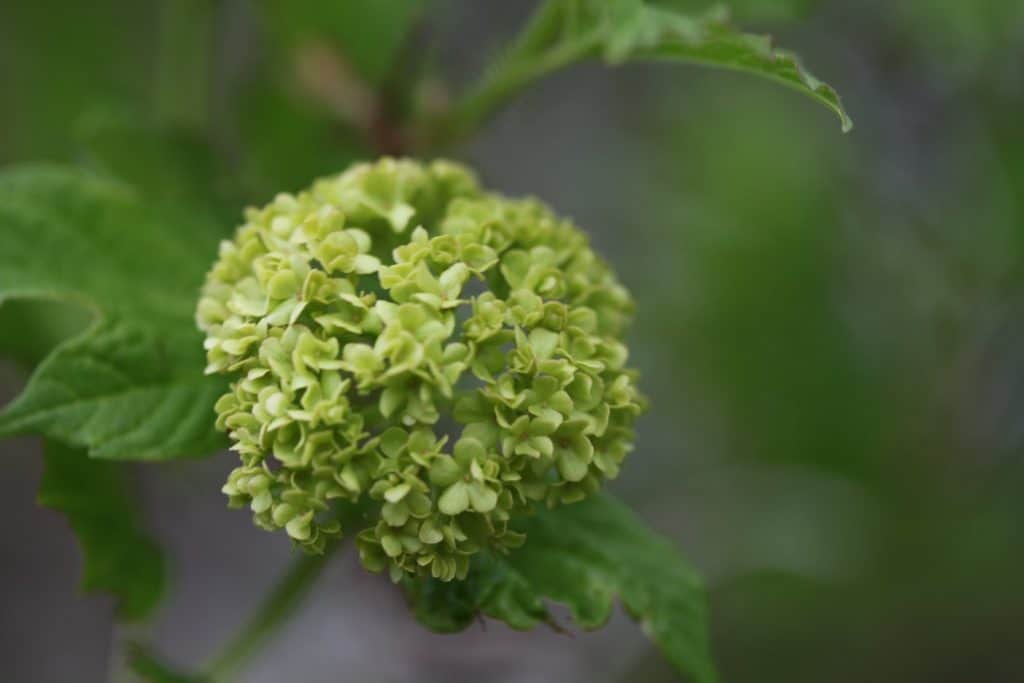
The Flowers
The flowers are round and full, with double three inch blooms. The blooms start off as a beautiful apple green colour and then gradually turn into more of a creamy colour with undertones of green.
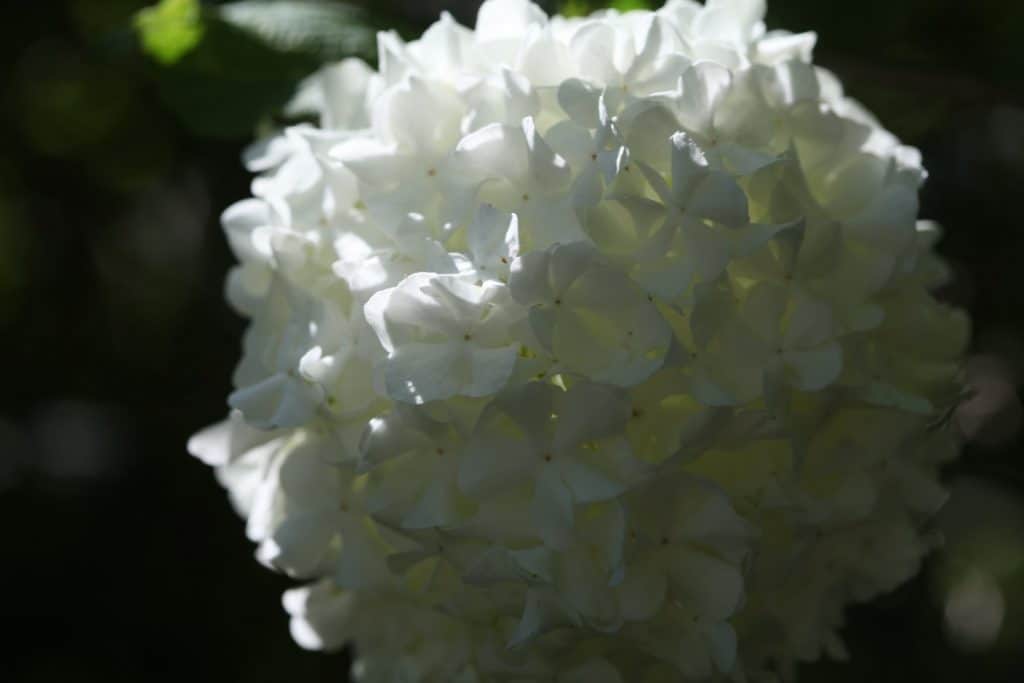
There is no sweet floral scent to these flowers, although they definitely look like they could smell absolutely scrumptious. However, interestingly they smell like nothing at all.
These blooms are great cut flowers though, and look great in spring arrangements.
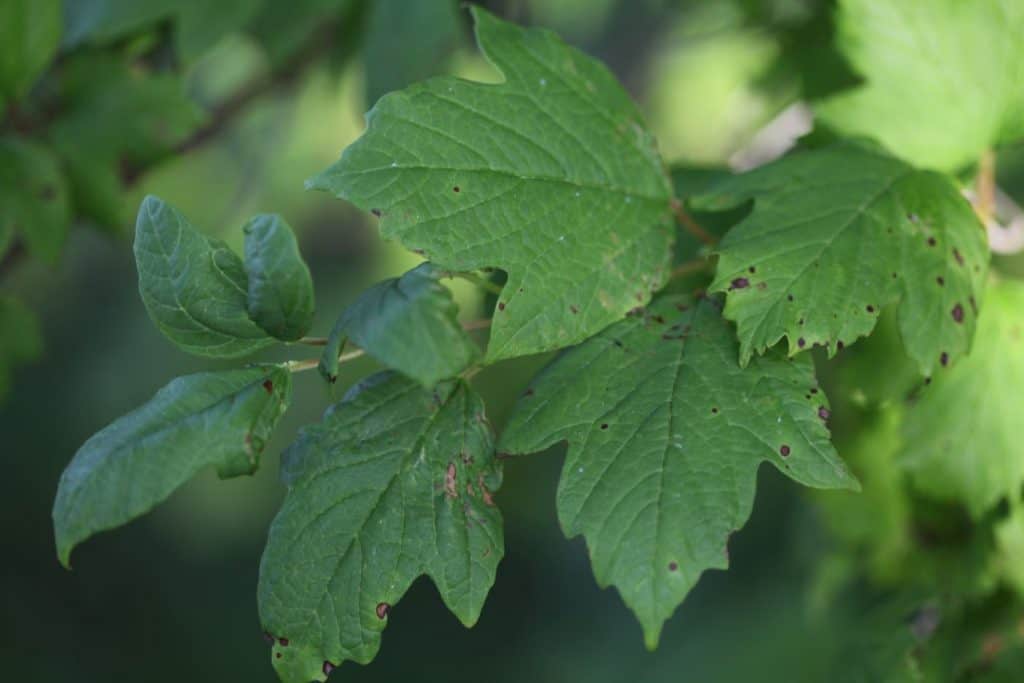
The Leaves
The leaves are an emerald green with three lobes which are very reminiscent of maple leaves.
The leaves will change colour in the fall and put on a display of red and orange autumn foliage.
I mentioned that one of the common names for Viburnum Opulus Roseum is Guelder Rose.
There is another Guelder rose within the species of viburnum opulus, not to be confused with Viburnum opulus roseum. This plant is called Guelder rose, Viburnum opulus.
We will discuss this plant next, to help to differentiate between the two.
Guelder Rose -Viburnum opulus
There is another viburnum cultivar within the opulus species that is also called 'guelder rose', however which looks much different than roseum.
This cultivar is not sterile, and produces flowers which are shaped differently than the blooms of Viburnum opulus roseum. These blooms do not look like snowballs, but rather are flattened and lacy.
Each bloom produces a circle of larger sterile flowers encircling a cluster of smaller fertile blooms which are hermaphroditic, and which produce red berries in the fall.
The common names for this viburnum opulus are similar or the same as those of Viburnum opulus roseum. They include guelder rose, snowball tree, and European cranberry bush, and more.
These shrubs have the same three lobed green leaf as roseum.
So 'guelder rose' can be a Viburnum Opulus Roseum or a Viburnum opulus. The plants are similar, however the blooms are very different.
When looking for your grandmother's snowball bush, you will most likely be looking for a Viburnum opulus roseum rather than a Viburnum opulus.
Unless of course your grandmother grew this plant.
If this is the case then this is certainly the plant you want. It is quite beautiful, and the berries make a wonderful display in the fall.
Propagating Viburnum Snowball
Viburnum Opulus Roseum can be grown from cuttings, and this is a great way to increase your stock of this plant.
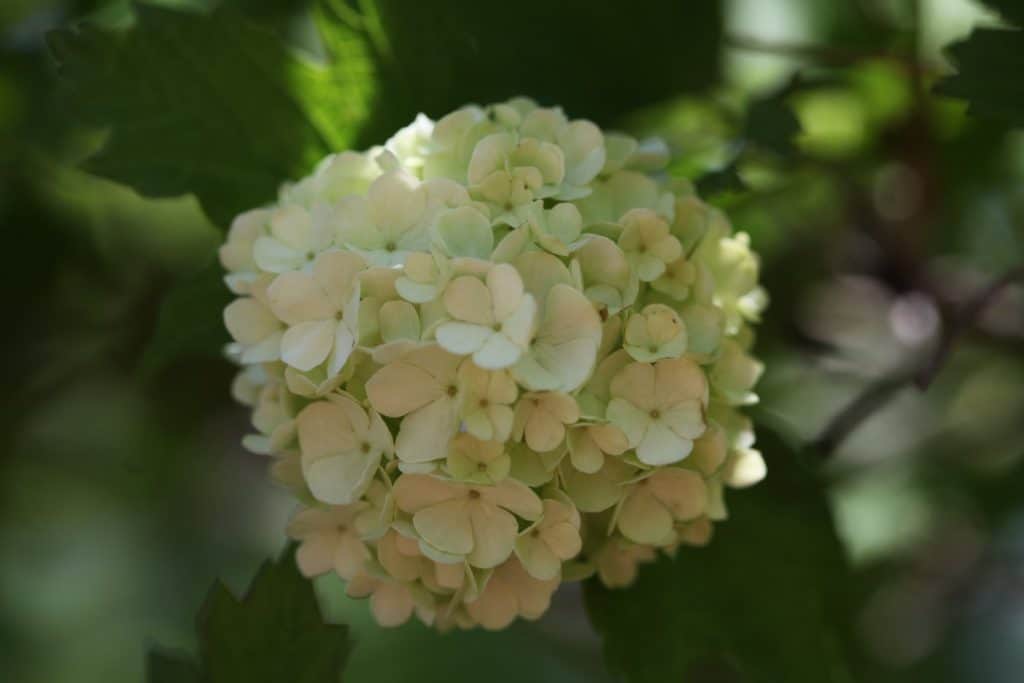
Viburnum species in general can be propagated easily by both softwood and hardwood cuttings.
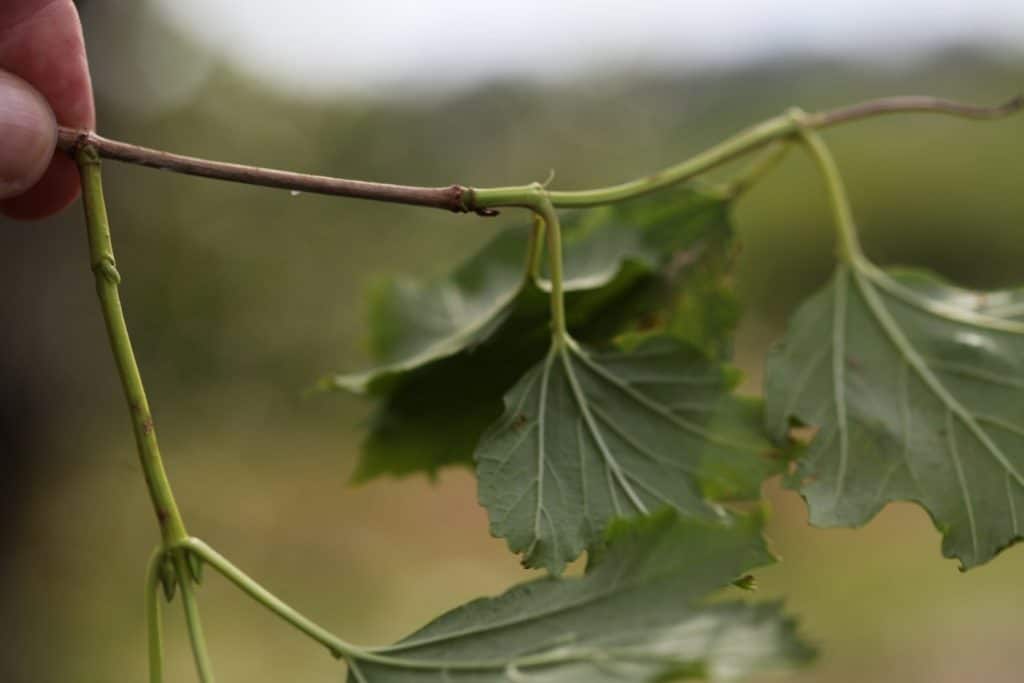
Softwood cuttings can be taken from the fresh growth of the current season. This wood is easy to identify as it is lighter and fresher than the stems of the previous year.
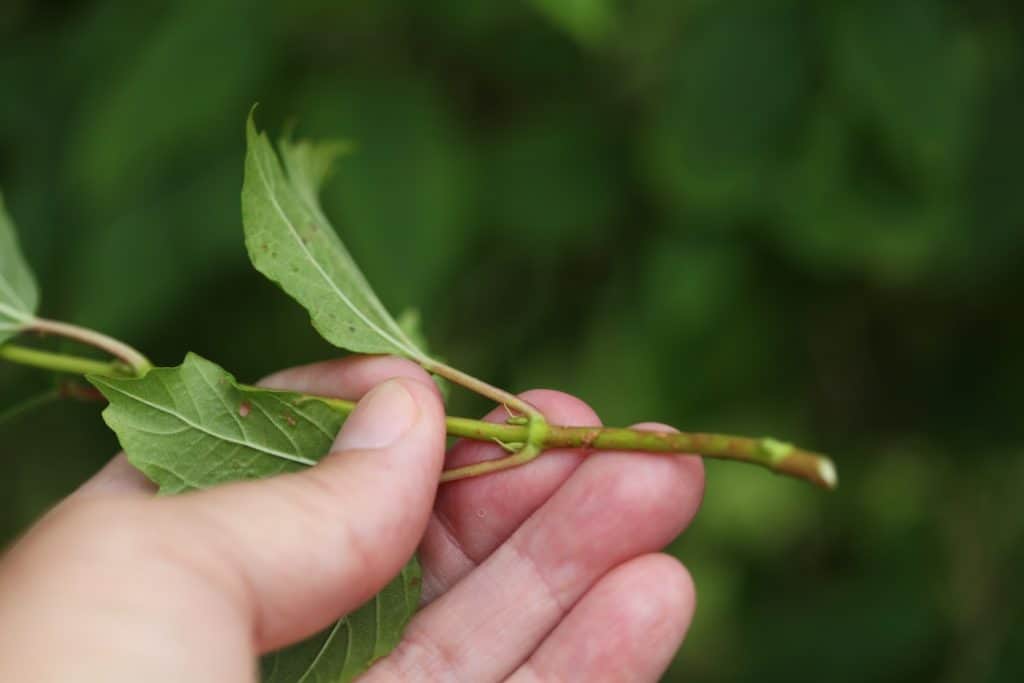
How To Propagate Snowball Bush
- Cut under a leaf node, and cut the stem approximately six inches long.
- Strip the leaves from the bottom half of the cutting, and place in a container of water while you prepare the medium for planting.
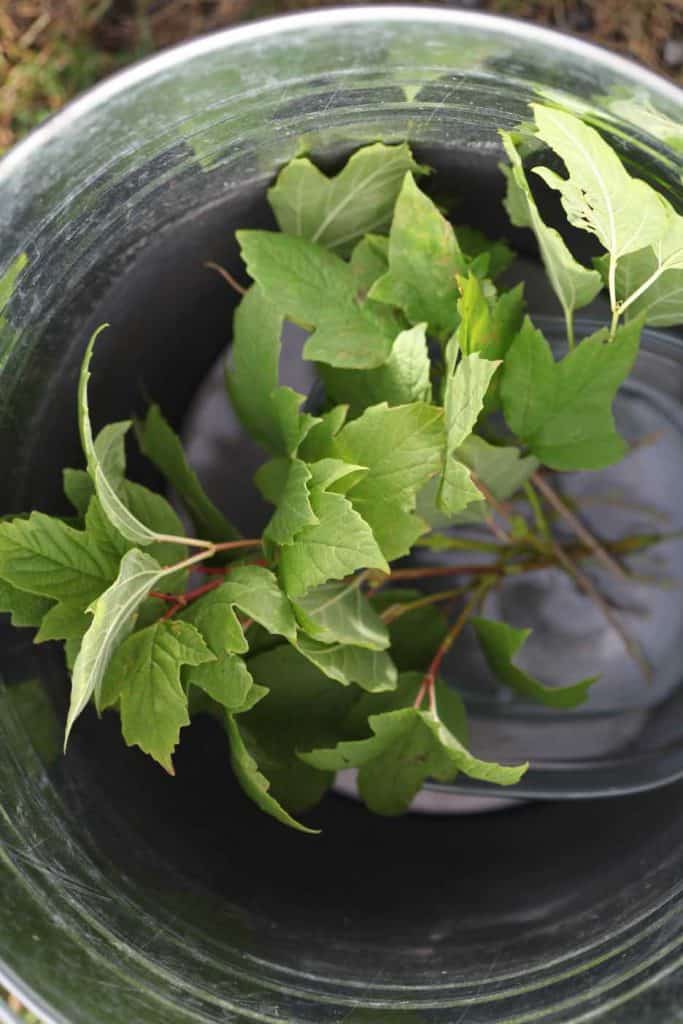
- Dip the tip of the cutting into rooting hormone.
- Plant into a soilless medium, by first making a small hole into the medium approximately two inches deep. Insert the cutting and firm the medium around the base of the cutting.
- Water the medium, and keep it moist while the roots are forming.
- New roots will form within the next several months. An indication of new roots is new green growth on the cutting.
- Once the roots have formed and the cutting is growing, it can be planted out into the garden.
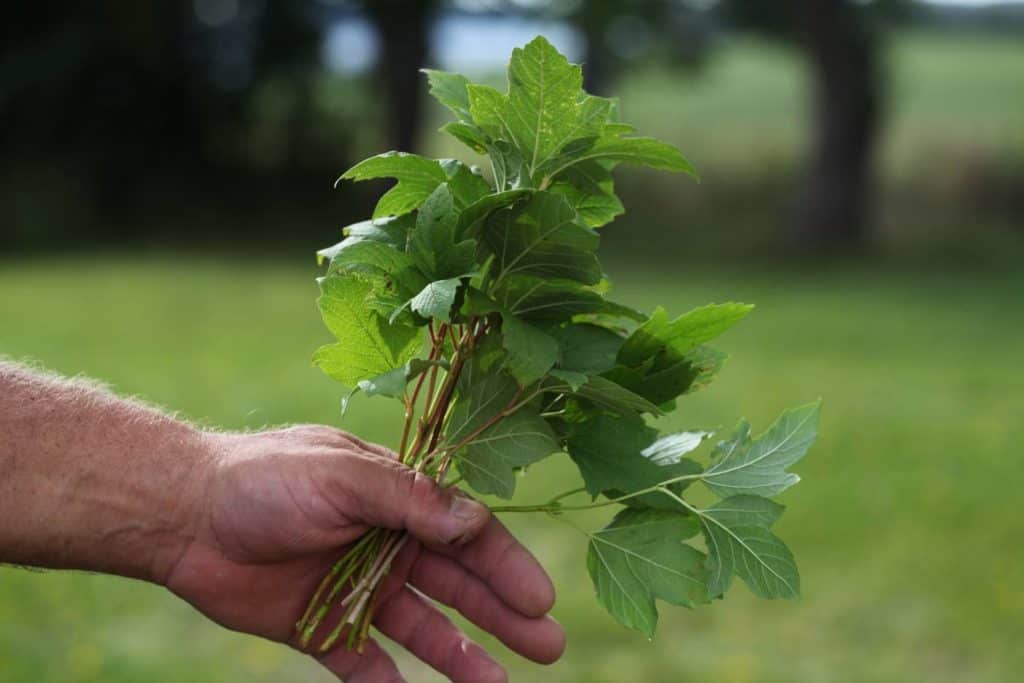
We tend to do cuttings early in spring in our growing zone, to give the plants a good chance to get established in the garden before the winter frosts set in the ground.
Growing Conditions:
It's time to consider the best growing conditions in which to grow a snowball bush. Let's have a look at some growing requirements.
Where Is The Best Place To Plant A Snowball Bush?
Here are some considerations for where to plant a Vibernum opulus roseum:
Sun Or Shade?
- The best place to plant a Viburnum snowball bush is in full sun, for best growth and flowering.
- These shrubs will grow in some dappled shade, however the more shade the more leggy the growth and branches.
- Our own heirloom snowball is in fact growing in the dappled shade of adjacent trees at different parts of the day. Flowering is not as prolific as it could be on our beloved shrub due to it's location.
- Since it is a very old plant we will definitely not be relocating it. Cuttings are an option, and when the cuttings are ready to be planted, they will be going into a full sun location.
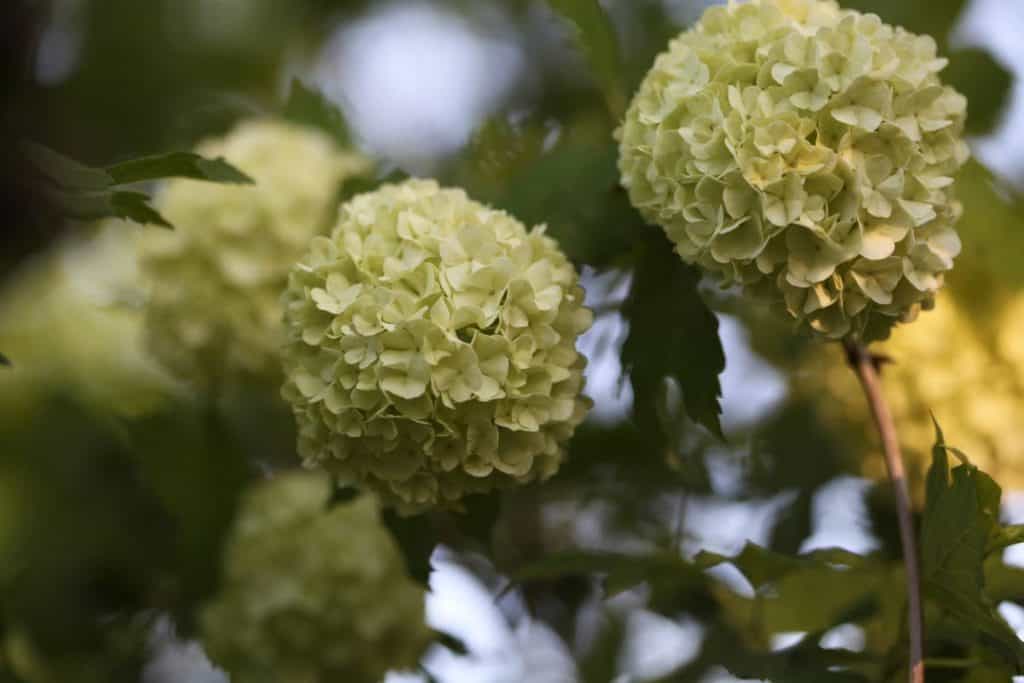
Soil Requirements
- Average medium well drained soil will do. This plant is tolerant of most soils.
- Our snowball bush at the farm is happily growing in clay soil.
- Clay has a tendency to retain moisture, however the spot where the shrub is growing is well drained, and high in nutrients.
Moisture Requirements
- This shrub will grow with very little water after established.
- It's always important to water in a new planting. Once established however these shrubs can be quite drought tolerant.
- Our snowball only receives moisture from the elements, as well as heavy morning dew, as we are right on the coast.
Growing Zone
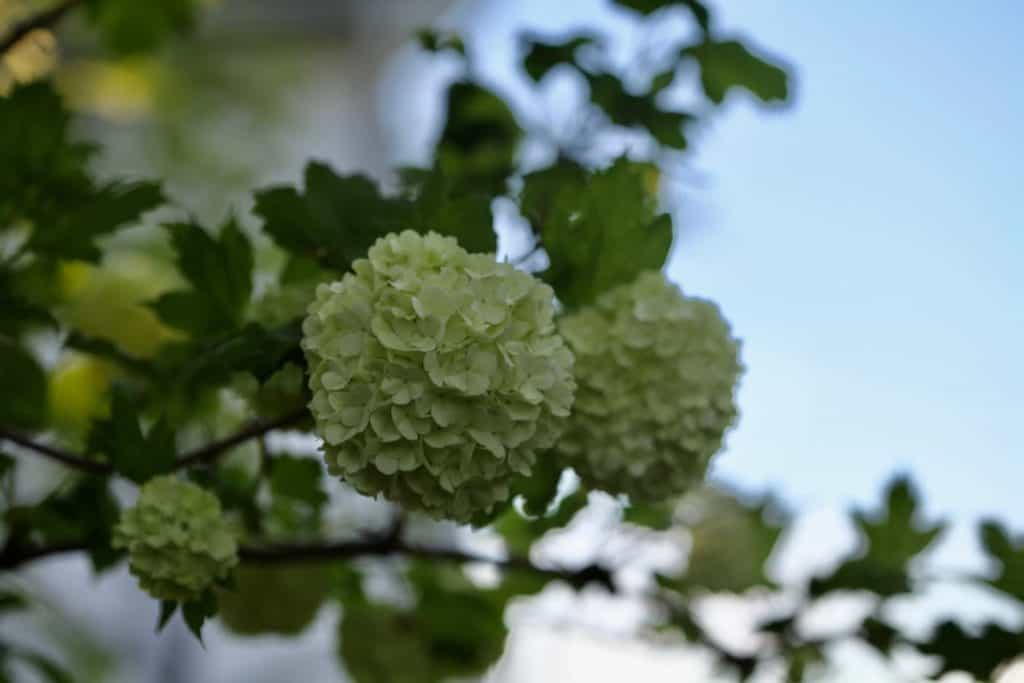
- Different viburnum varieties can have different hardiness requirements. The Viburnum opulus roseum is a very hardy shrub and grows in USDA plant hardiness zones 3 to 8.
When To Plant
- Plant in spring or fall, depending on your growing zone.
- In some cooler climates, a spring planting is preferred as it will help the plant become established in the garden before winter sets in.
- A good rule of thumb would be to plant whenever small trees or shrubs are typically planted in your own growing zone.
How Fast Does Snowball Viburnum Grow?
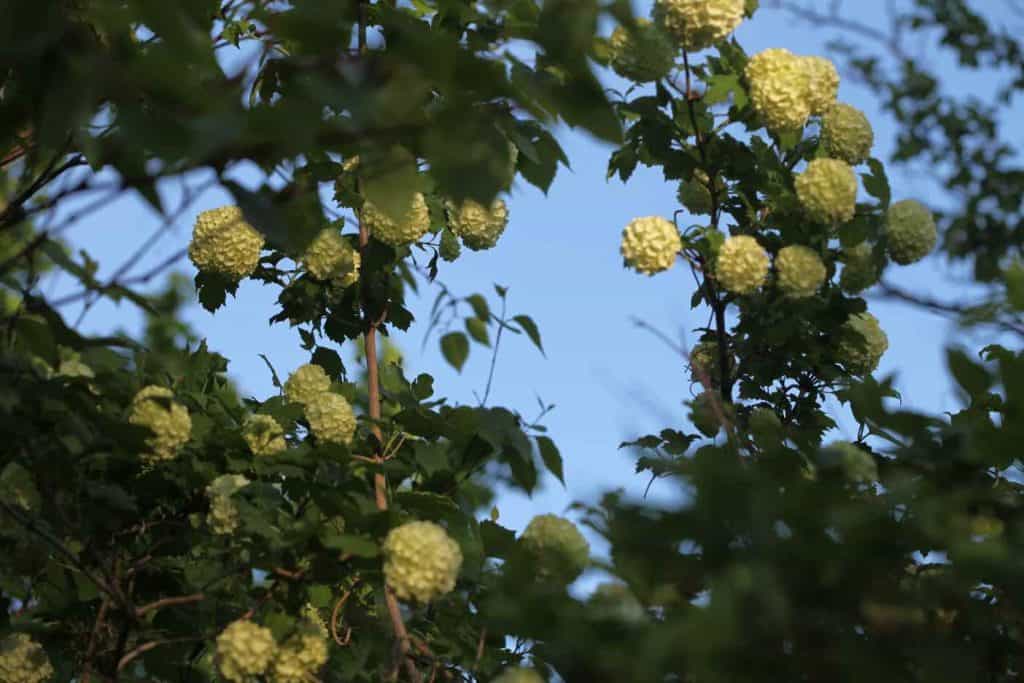
Snowball viburnum is a fast grower, and will grow from one to two feet in a growing season in ideal growing conditions.
How Big Does A Snowball Viburnum Get?
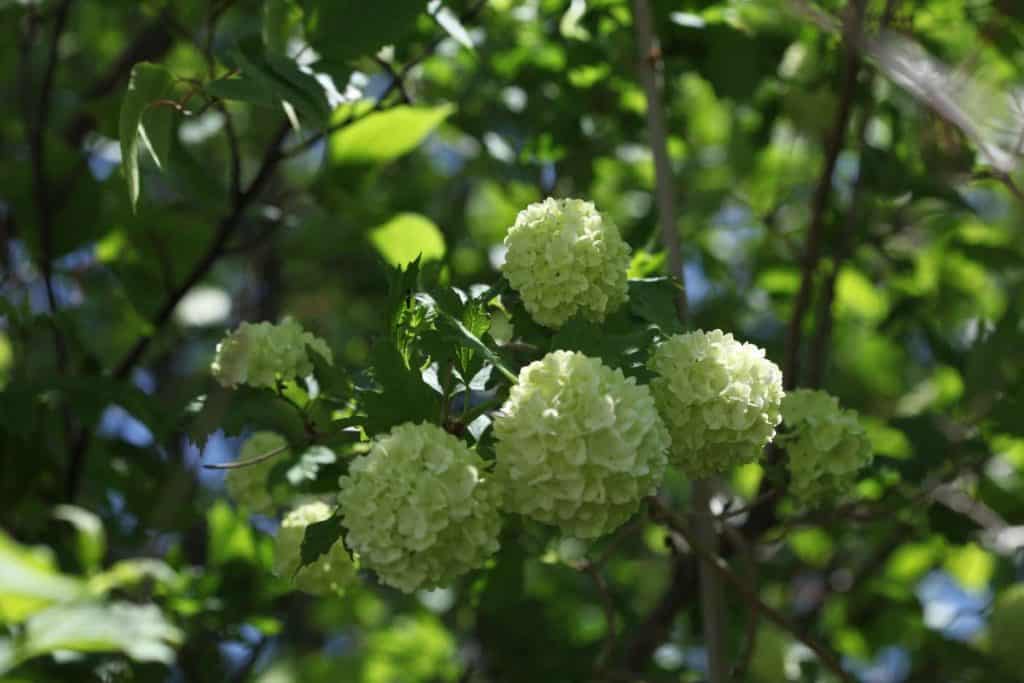
The maximum size of the Viburnum opulus roseum is twelve feet wide by twelve feet tall.
The shrub can be pruned however, to keep it at a smaller more manageable size if needed.
Do Snowball Bushes Bloom All Summer?
Snowball bushes have their season, just like the lilacs. Ours will bloom for about three weeks in the late spring.
Generally snowball bushes bloom from mid spring to early summer.
When the lilacs are in full bloom our Vibernum opulus roseum is starting to form it's green blooms. This occurs right around the end of May in our growing zone.
Within a week the green blossoms morph into a creamy white colour.
By mid June the blooms were at their peak, and then within the next week they were gone.
At the end of August there is no evidence that there were any blooms on the bush. Since it is a sterile plant, there are no berries with seeds to reproduce.
We are hoping from some beautiful leaf colour in the fall, however none of the leaves have yet changed their colour.
Pruning Snowball Bush
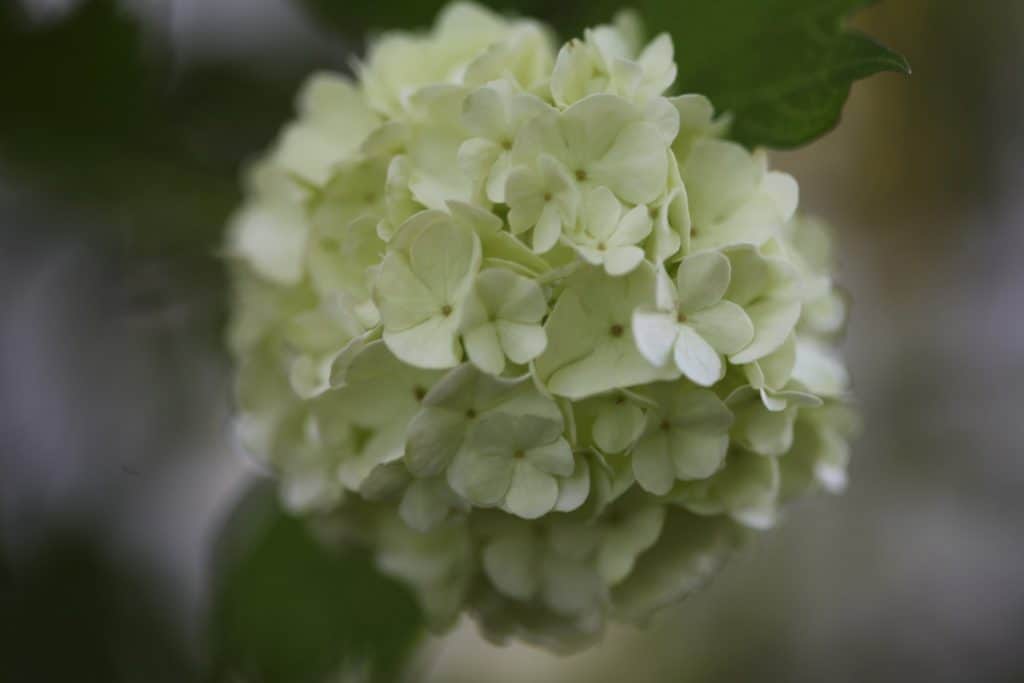
Pruning a snowball bush is a great practice. It helps to trim off old dead stems and shape the bush itself.
Pruning will also promote growth, and can help to fill out a leggy plant by encouraging more stem growth.
The best time to prune a viburnum is after flowering.
Trimming can help to keep the bush at a smaller size as well if this is your preference.
Snowball Bush In Winter- Winter Care
In the fall the snowball bush will present with a rich fall colour palette of red and oranges as the leaves change from green to autumn shades.
The snowball bush is a deciduous shrub, and will lose it's leaves in the fall when the temperatures get colder. Through the winter the branches will be bare.
It can offer winter protection to small animals and birds, and is a wonderful four season shrub.
There is no real care or maintenance for the snowball bush in preparation for winter, or throughout the winter.
These plants are low maintenance and hardy, and are able to withstand harsh winter climates.
We are looking forward to planting a few more of these wonderful shrubs around the farm.
Have you tried to grow a snowball bush? Be sure to leave a comment below to share your experience!
OTHER POSTS YOU MAY LIKE:
See the Web Story on Growing Snowball Bush- Viburnum Opulus Roseum!
Pin It For Later!
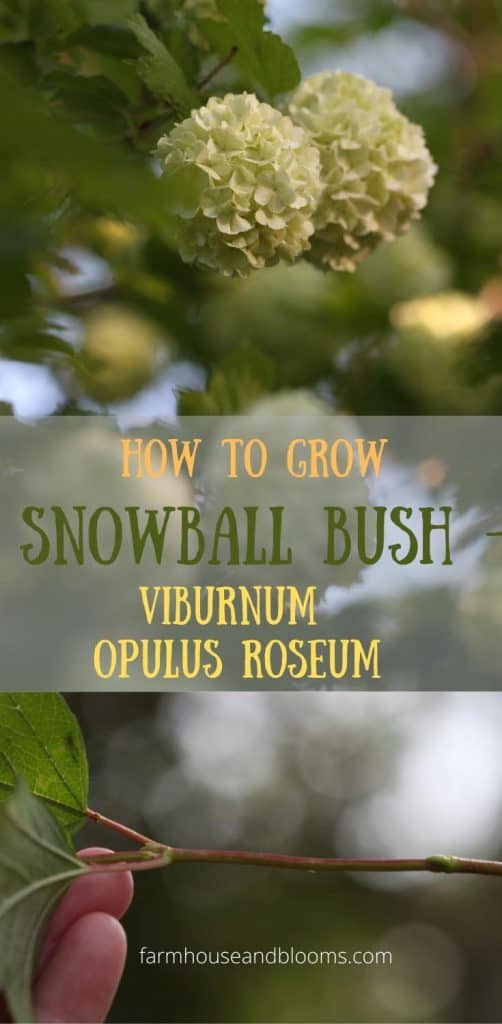
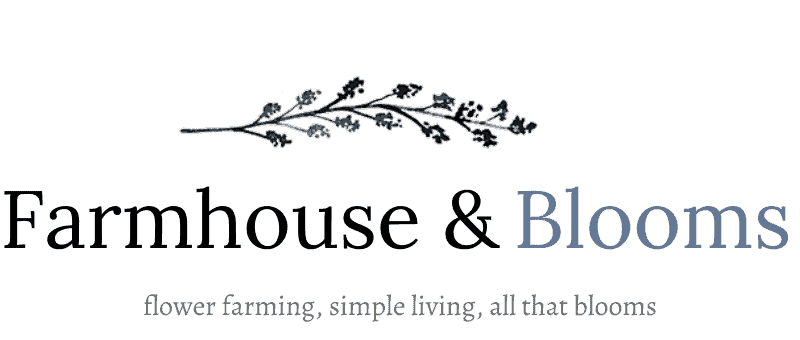

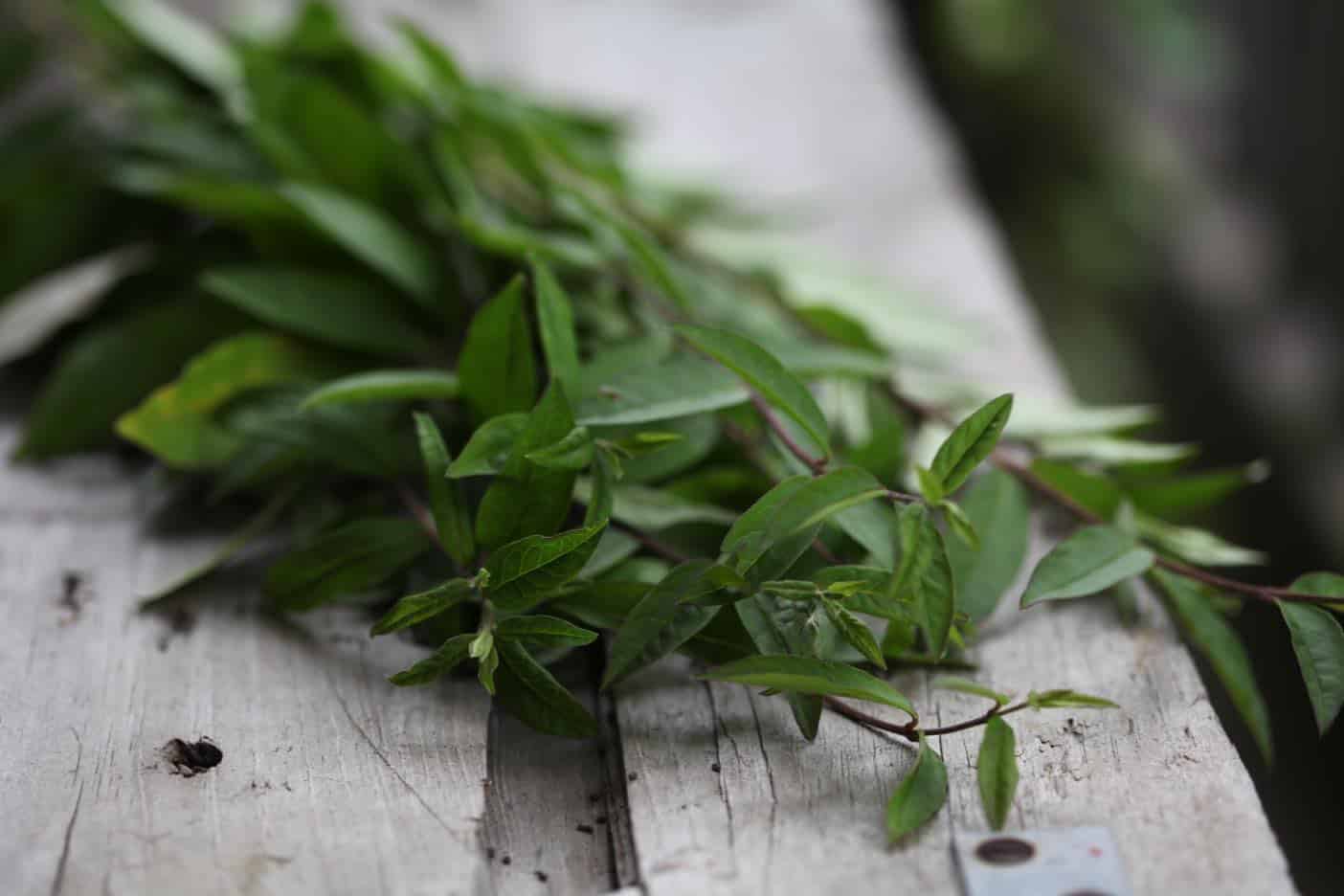
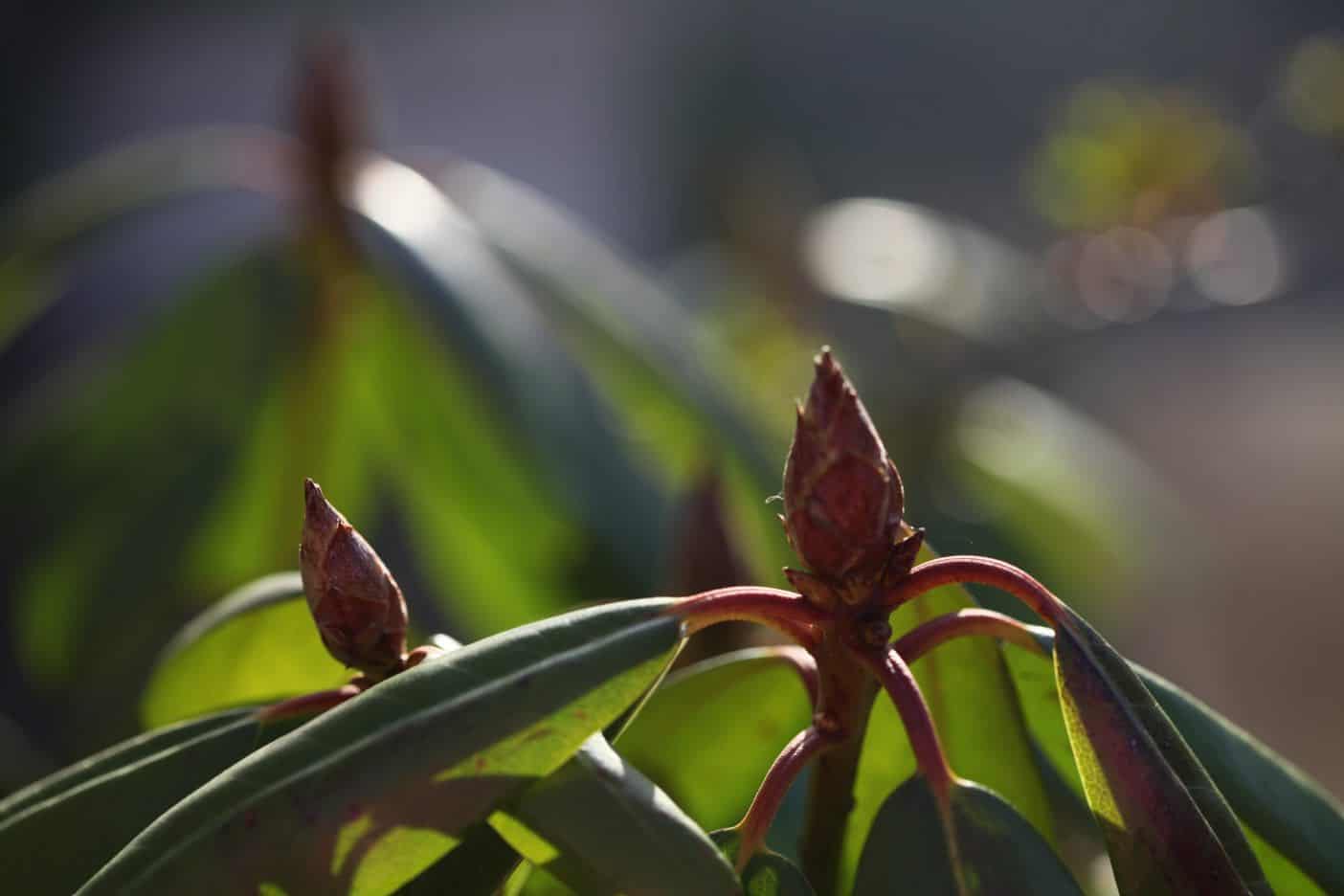
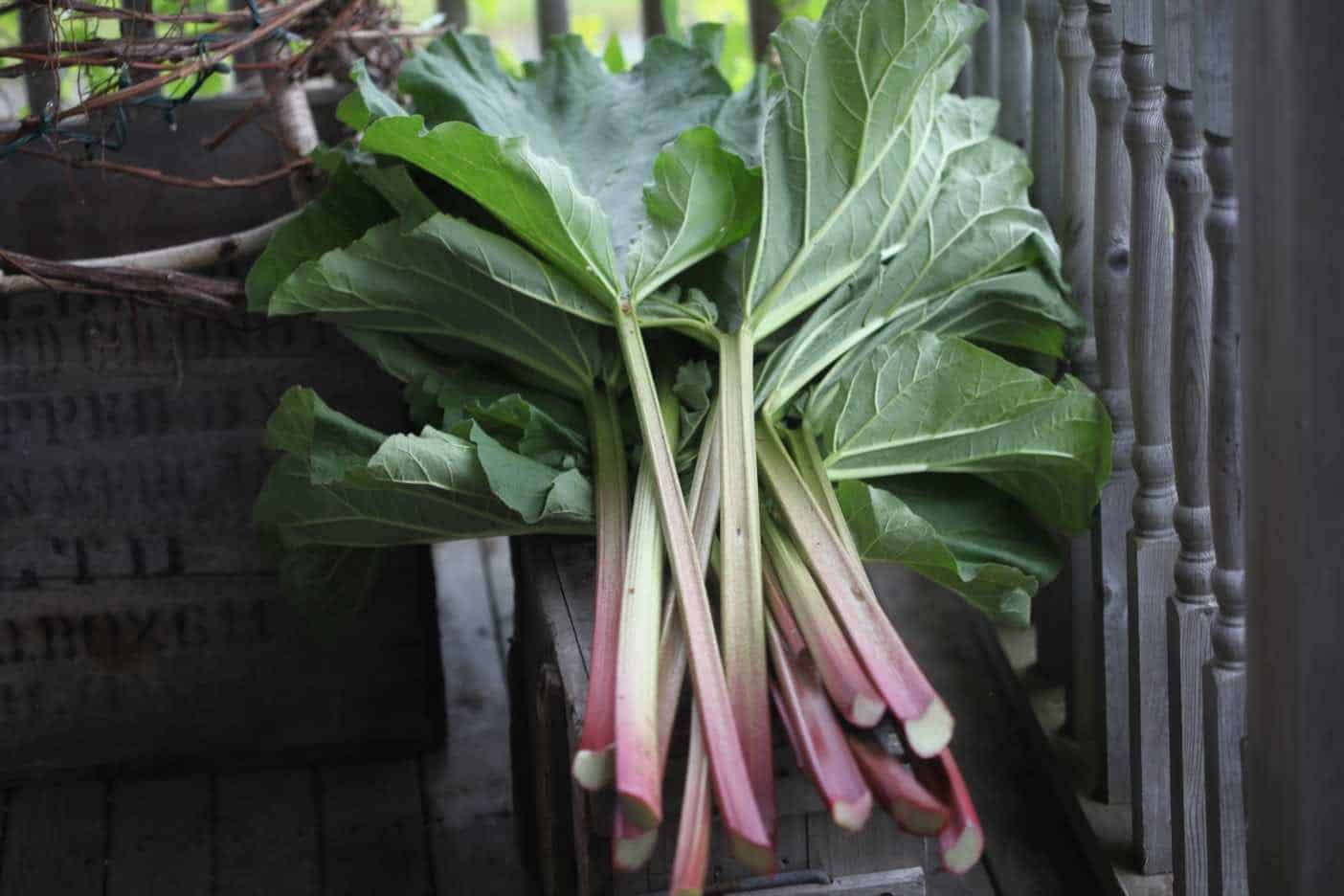
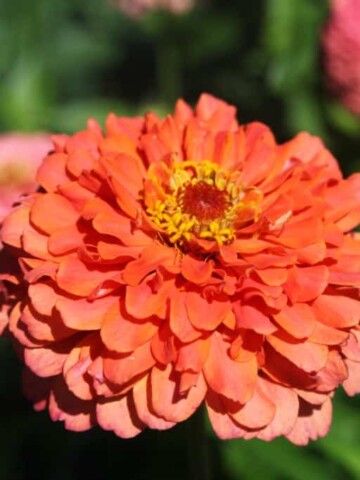
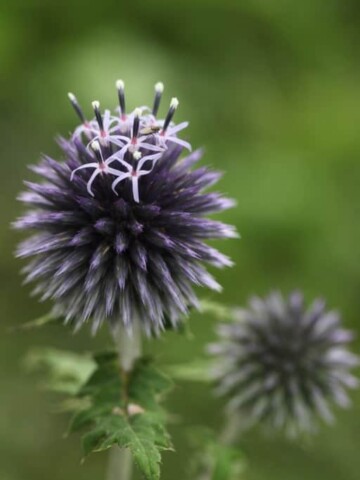
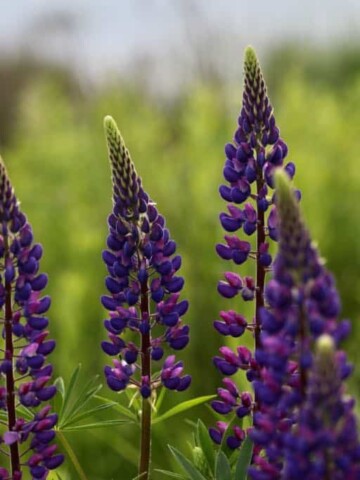
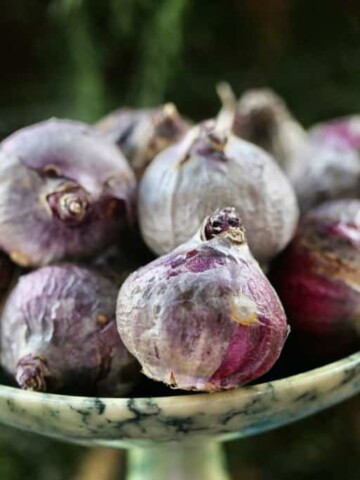
Leave a Reply